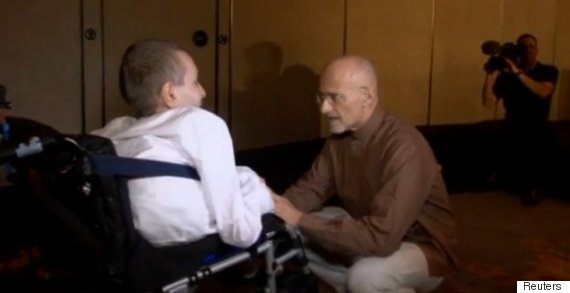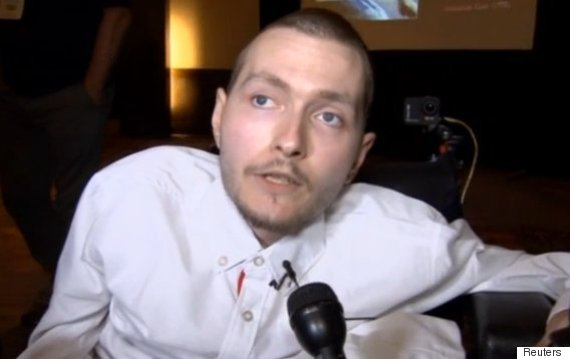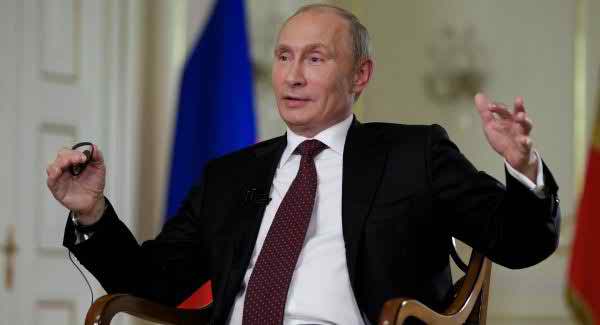Head Transplant Dr Sergio Canavero Is Recruiting Surgeons For $15m Operation On Valery Spiridinov
A surgeon who hopes to perform the world’s first head transplant has made a pitch to recruit experts to assist in the operation. Italian neurosurgeon Dr Sergio Canavero aims to carry out the groundbreaking surgery on 30-year-old Valery Spiridinov in December 2017.
Spiridinov has Werdnig-Hoffman disease, a rare genetic condition which stops his muscles growing, meaning they cannot support his adult skeleton. The $15m surgery would see Spiridinov’s head removed from his body and attached to a healthy body from a brain dead donor. On Friday the pair appeared at the annual meeting of the American Academy of Neurological and Orthopaedic Surgeons in Maryland.

‘We can do it’-Dr Sergio Canavero kneels at Spiridinov’s feet – #thenewscompany #techead #rrajowan #ibangla #enewspress #doinikbarta
Dr Canavero, who was filmed kneeling at Spiridinov’s feet telling him: “We can do it”, said: “The chances of this working are 90 per cent, of course there is a marginal risk. I cannot deny that.” Referring to Spiridinov, he said: “He is a brave man and he is in horrible condition. You have to understand – for him,Western medicine has nothing to offer. Western medicine has failed.” Spiridinov, who is confined to a wheelchair, admitted he is nervous but said: “If it goes good, I think I will get rid of the limits which I have today.”
Of his critics, Dr Canavero said: “I prepare myself, not only scientifically but also psychologically which is equally important in order to tackle all these attacks on several fronts.

In 1971 a Dr Robert White transplanted the head of one monkey onto the body of another – #thenewscompany #techead #rrajowan #ibangla #enewspress #doinikbarta
“There’s implications well beyond religion, culture, the future, everything. There is risk in everything. [If] We stop taking risks, [then] relax, lie back and wait for your death to come.” Cardiothoracic surgeon Dr Raymond Dieter attended the conference. He remarked: “One of the first concerns obviously is can you just keep the brain alive while you’re doing this type of procedure.
“When you think you are doing a heart transplant, or a kidney transplant, or a liver transplant, you have to cool those organs to give you a longer period of … surgical time before you reconnect all the vessels and you start reperfusion.”
Dr Canavero announced his bold claims in February, via a paper published in Surgical Neurology International. He proposes that after severing the head from the body via a clean cut to the spinal column, it would be attached to a living donor body. Once the major nerves and arteries have been rejoined, the spinal column would be injected with polyethylene glyco, a substance that encourages the fat in cell membranes to join.
The patient would then be placed into an induced coma for several weeks while electrodes would be used to stimulate new nerve connections between the head and the body. The recipient would be able to speak with the same voice claims Dr Canavero, adding with physiotherapy they would be able to walk within a year. Despite Spiridinov’s optimism much of the medical profession believe the controversial procedure is doomed.
In April Dr Hunt Batjer, president elect of the American Association for Neurological Surgeons, told CNN: “I would not wish this on anyone. I would not allow anyone to do it for me as there are a lot of things worse than death.” Head transplants have been carried out on dogs, monkeys and mice, all with varying degrees of success.






































